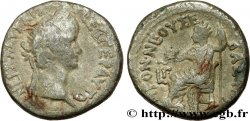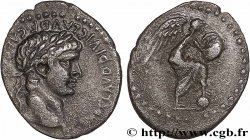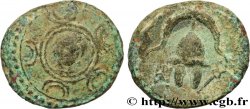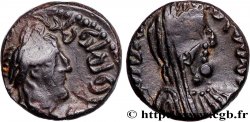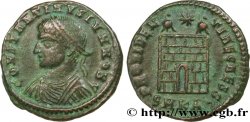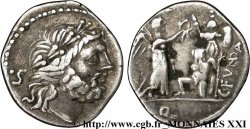v16_0478 - NERONE Tétradrachme syro-phénicien
MONNAIES 16 (2002)
Prezzo di inizio : 350.00 €
Valutazione : 600.00 €
Prezzo realizzato : 427.00 €
Numero di offerte : 3
Offerta maxima : 610.00 €
Prezzo di inizio : 350.00 €
Valutazione : 600.00 €
Prezzo realizzato : 427.00 €
Numero di offerte : 3
Offerta maxima : 610.00 €
Tipo : Tétradrachme syro-phénicien
Data: an 8/ 110
Nome della officina / città: Antioche, Syrie, Séleucie et Piérie
Metallo : argento
Diametro : 24 mm
Asse di coniazione : 12 h.
Peso : 15,18 g.
Commenti sullo stato di conservazione:
Remarquable portrait de l’empereur jeune et mince, sur un grand flan ovale, bien disposé. Léger tréflage au revers et faiblesse sur la poitrine de l’aigle
N° nelle opere di riferimento :
Pedigree :
Cet exemplaire est le 0082_104 de la base TSP
Diritto
Descrittivo diritto : Buste lauré de Néron jeune à droite avec l'égide sur le cou (O*4).
Legenda diritto : NERWNOS KAISAROS - SEBASTOU, (Nerwnws Kaisaros Sebastou)
Traduzione diritto : (Néron césar auguste).
Rovescio
Descrittivo rovescio : Aigle debout à gauche sur un foudre ailé, les ailes déployées ; dans le champ à gauche, une palme verticale.
Legenda rovescio : H/ IR
Traduzione rovescio : (8 / 110).
Commento
Exemplaire particulièrement joli et de flan large de ce type que l’on trouve habituellement en très mauvais état. Michel Prieur a répertorié 66 exemplaires pour cette année. Les auteurs du Roman Imperial Coinage signalent l'existence de 20 coins de droit. Il y avait 18 pièces de ce type dans le trésor de Tiberias. L'an 110 appartient à l'ère césarienne. L'importance des émissions est liée à la campagne parthique de Corbulon.
A particularly fine example of this type, with a wide flan, which is usually found in very poor condition. Michel Prieur listed 66 examples for this year. The authors of the Roman Imperial Coinage report the existence of 20 obverse dies. There were 18 coins of this type in the Tiberias treasury. The year 110 belongs to the Caesarean era. The importance of the issues is linked to Corbulo's Parthian campaign.
A particularly fine example of this type, with a wide flan, which is usually found in very poor condition. Michel Prieur listed 66 examples for this year. The authors of the Roman Imperial Coinage report the existence of 20 obverse dies. There were 18 coins of this type in the Tiberias treasury. The year 110 belongs to the Caesarean era. The importance of the issues is linked to Corbulo's Parthian campaign.








 Segnalare un errore
Segnalare un errore Stampate la pagina
Stampate la pagina Condividi mia selezione
Condividi mia selezione Fai una domanda
Fai una domanda Consegnare / vendere
Consegnare / vendere
 Descrittivo
Descrittivo